MAPPED: The 32 states where zombie deer disease has been reported so far – and why humans should be prepared for ‘slow moving disaster’
At least 32 states in America and parts of Canada have seen reports of a virus called “Zombie Deer Disease” that could potentially spread to people in what experts are calling a “slow-moving disaster.”
The deadly brain virus, which confuses animals, drools and has no fear of humans, could one day infect humans, some authorities warn.
The alarm was raised after a deer carcass tested positive for chronic wasting disease (CWD) in Yellowstone National Park in northwestern Wyoming in November.
Now the United States Geological Survey (USGS) has detected the virus in 32 states and four Canadian provinces.
Many of the reported cases are in the upper Midwest and mid-Atlantic states.
At least 32 states in America and parts of Canada have seen reports of a virus called “Zombie Deer Disease” that could potentially spread to people in what experts are calling a “slow-moving disaster.”
Kansas, Nebraska and Wisconsin are all reported to have more than 40 counties reporting cases of the virus USA today.
Dr. Michael Osterholm, who has studied the spread of so-called 'mad cow disease', is the one who raised the alarm in The guardand called it a 'slow-moving disaster.'
Scientists believe there is a very real possibility of the disease spreading to humans.
Dr. Cory Anderson and Osterholm both say that many thousands of people have likely eaten meat from infected deer
Anderson told The Guardian: 'The outbreak of BSE (mad cow disease) in Britain was an example of how things can become chaotic overnight if, for example, there is a spillover event from livestock to people.'
“We're talking about the potential for something similar to happen,” said Anderson, co-director of the program at the Center for Infectious Disease Research and Policy.
He added: 'No one is saying it will definitely happen, but it is important that people are prepared.'
According to Anderson, whose research focused on the routes of CWD transmission, the disease is “invariably fatal, incurable and highly contagious,” he said.
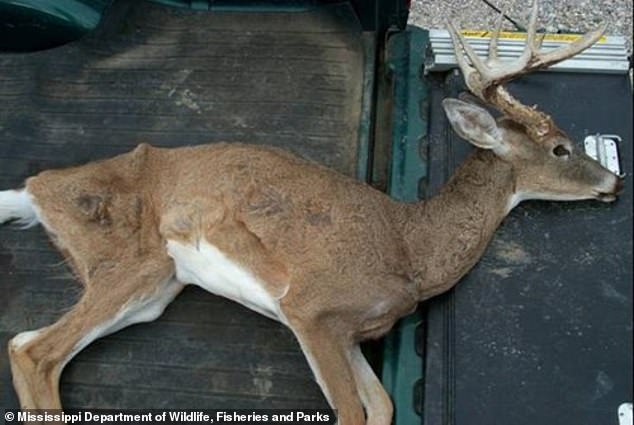
The deadly brain virus, which confuses animals, drools and is not afraid of humans, could one day infect humans, as some authorities warn
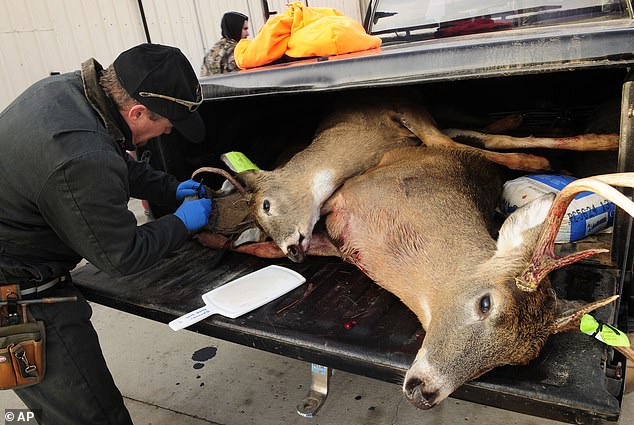
Scientists have warned that the virus, called 'Zombie Deer Disease', could potentially spread to humans. A biologist is shown removing lymph nodes from deer to test them for chronic wasting diseases
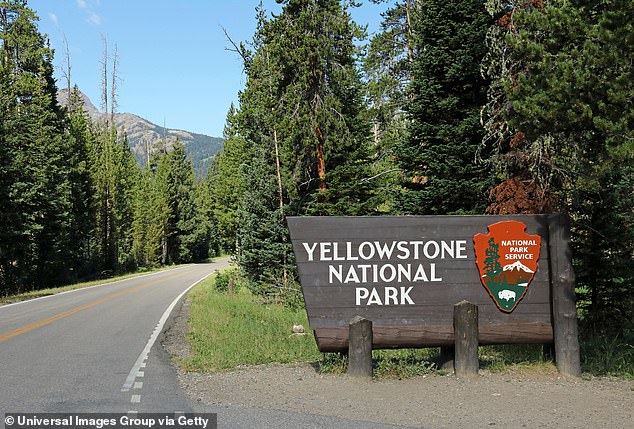
The alarm was raised after a deer carcass tested positive for chronic wasting disease (CWD) in Yellowstone National Park in northwestern Wyoming in November.
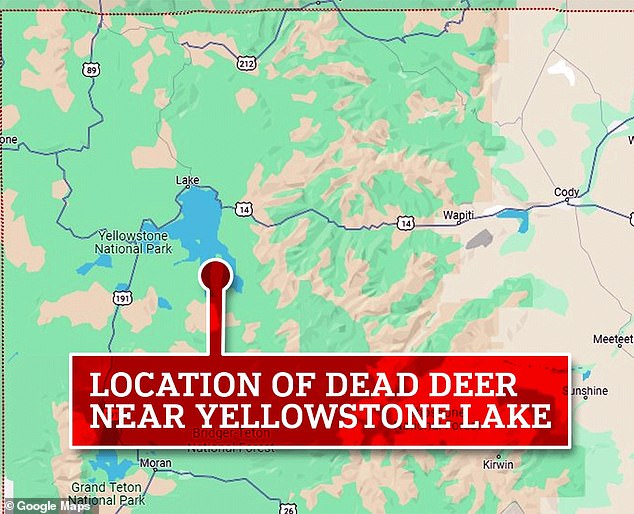
The infected deer's body was tracked to a peninsula along the southern edge of Yellowstone Lake, via a GPS collar fitted last March for a population dynamics study.
'The concern is deeply rooted in the fact that we have no effective, easy way to eradicate it, either from the animals it infects or from the environment it contaminates.'
CWD is a prion-borne disease, similar to 'Mad Cow', that can cause weight loss, loss of coordination and other ultimately fatal neurological symptoms in deer and related species.
The U.S. National Park Service said last month: “There is currently no evidence that CWD can infect people or pets.”
But the federal agency warned game hunters in particular: “It is recommended that tissues from CWD-infected animals are not consumed.”
Samples from the infected mule deer's body tested positive for CWD during multiple rounds conducted by the Wyoming Game and Fish Department's (WGFD) Wildlife Health Laboratory.
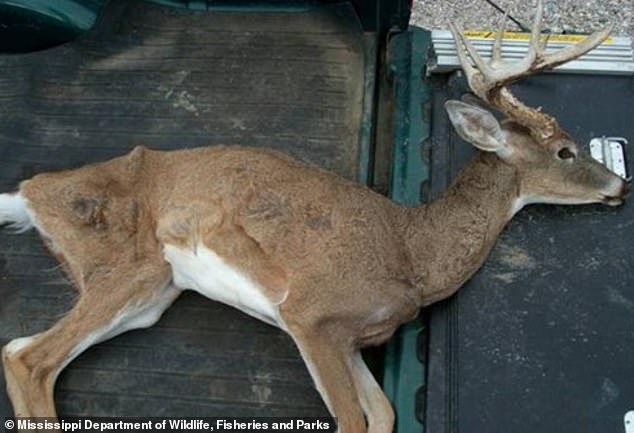
Chronic Wasting Disease (CWD) is a prion-borne disease, similar to 'Mad Cow', that can cause weight loss, loss of coordination and other ultimately fatal neurological symptoms in deer. Above, a deer killed by CWD, as identified by Mississippi wildlife officials
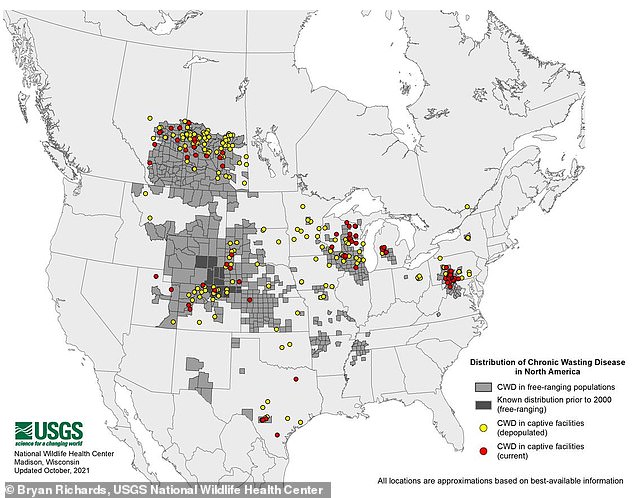
According to the US Geological Survey, CWD has spread to more than 31 US states, two Canadian provinces and South Korea
Typical testing of living and dead animals involves taking samples of tissue from a creature's nervous system, either from the central nervous system, such as the spinal cord, or from peripheral systems, such as the retropharyngeal lymph nodes and the tonsils.
Studies have shown that the disease posed a risk to non-human primates, including monkeys, according to Centers for Disease Control and Prevention.
“These studies raise concerns that there may also be a risk to humans,” the agency said. 'Since 1997, the World Health Organization has recommended that it is important to prevent the pathogens of all known prion diseases from entering the human food chain.'
Park officials in Yellowstone said they are working with WGFD to monitor the park's deer and other ungulates, both dead and alive, to better assess how far CWD has spread through the national park.
Yellowstone National Park officials said the discovery prompted them to reconsider the park's CWD Surveillance Plan for 2021 – with a new protocol version expected sometime next year.
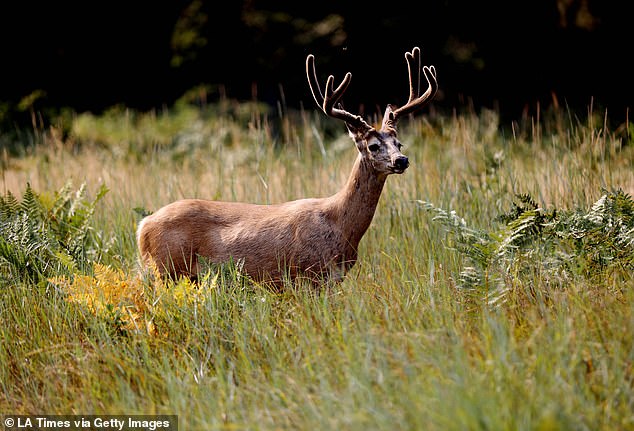
CWD was first detected in mule deer in Wyoming in 1985 in the southeastern region of the state
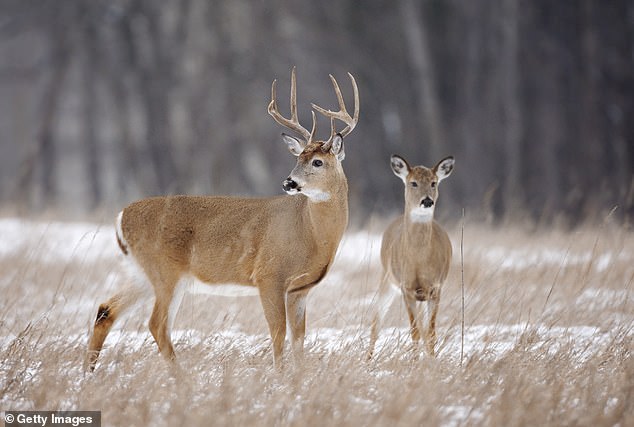
The disease's arrival in Yellowstone marks the end of a decades-long spread westward through the state, reaching the national park site in the northwest corner of Wyoming.
Park spokesperson Morgan Warthin said Yellowstone also plans to increase its collaboration with WGFD to identify which areas of the park are at increased risk for the disease.
CWD was first detected in mule deer in Wyoming in 1985, along the southeastern region of the state.
The following year, the fatal brain disease was discovered in elk in Wyoming, according to WGFD.
The disease's arrival in Yellowstone marks the end of a decades-long spread westward through the state, reaching the national park's location in the northwest corner of Wyoming.
Wyoming game officials had tracked the mule deer from March 2023 to October 2023, when the GPS tag indicated it had likely died.
Their search for the body took them to a landmass between the southern and southeastern arms of Yellowstone Lake known as the Promontory.
North of the park, Montana state wildlife regulators also assist in the efforts and monitor game taken by their state's local hunters.
A spokesperson for Montana Fish, Wildlife & Parks Region 3, Morgan Jacobsen, said Daily Montanan that many CWD cases have not yet been detected in the state's hunting districts adjacent to Yellowstone.
Jacobsen described the news as a “data point of interest,” but not something that would radically change Montana's own CWD monitoring plans.
“We will continue our monitoring and communication with the park and work with hunters as the primary management tool for CWD in Montana,” Jacobsen said.
